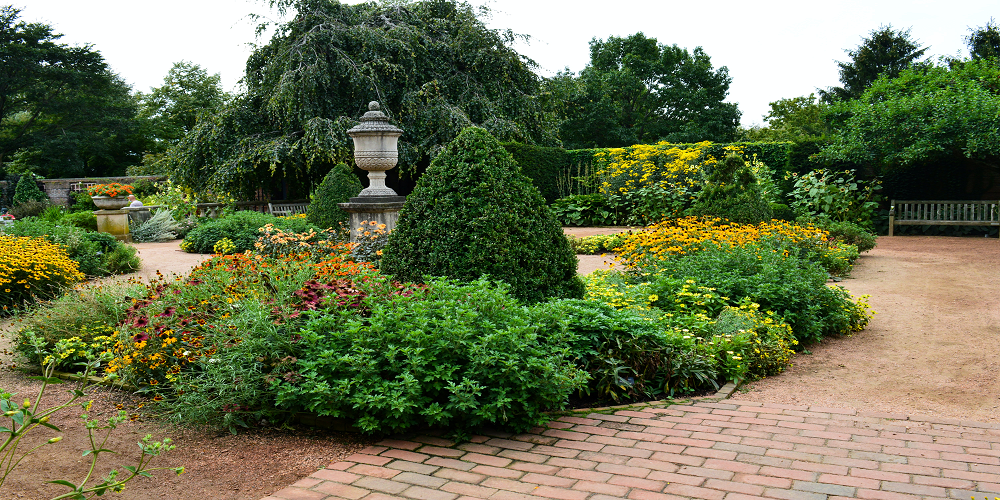Welcome to our blog post on “The Basics of Landscaping: Transforming Your Outdoor Spaces”! Whether you have a spacious backyard or a tiny balcony, we believe that every outdoor space has the potential to become your personal oasis. From lush gardens to cozy patios, this article will guide you through the essential elements and techniques of landscaping, helping you unleash your creativity and breathe new life into your surroundings.
Introduction
Landscaping refers to the art and science of designing and arranging outdoor spaces in order to enhance their aesthetic appeal, functionality, and overall value. It involves the use of various elements such as plants, trees, shrubs, hardscapes, lighting, and other features to create a harmonious and visually pleasing environment.
Many homeowners often overlook the importance of landscaping in their outdoor spaces. They may view it as an unnecessary expense or simply not have the time or knowledge to invest in it. However, landscaping plays a crucial role in creating a welcoming and attractive outdoor space that can greatly benefit both you and your property.
What is landscaping?
Landscaping is a term that refers to the process of designing and creating outdoor spaces such as gardens, yards, and parks. It involves altering the natural features of an area to enhance its aesthetic appeal while also improving its functionality. Landscaping can range from simple plantings and lawn care to more complex projects involving hardscaping, water features, and lighting.
At its core, landscaping is about transforming a plot of land into a beautiful and functional space that meets the needs and desires of its owners. This could mean creating a peaceful oasis for relaxation or a lively gathering space for entertaining guests. No matter the goal, landscaping requires careful planning, creative vision, and skilled execution.
One of the key elements of landscaping is the use of plants. Plants are not only aesthetically pleasing but also serve several important purposes in landscaping. They help create privacy barriers, provide shade and shelter from wind, regulate temperature, prevent soil erosion, and attract beneficial insects like pollinators.
When selecting plants for a landscape project, it’s essential to consider factors such as climate conditions (sun exposure and water availability), maintenance requirements (pruning needs and pest resistance), as well as color scheme and textures to create an overall cohesive design.
History of Landscaping
Landscaping has been an integral part of human civilization for thousands of years. It is the art and science of creating beautiful and functional outdoor spaces, often with a focus on plants and natural elements. The history of landscaping can be traced back to ancient civilizations such as the Egyptians, Greeks, and Romans.
The earliest form of landscaping can be seen in the Hanging Gardens of Babylon, one of the Seven Wonders of the Ancient World. Built around 600 BC, it was believed to be a series of terraced gardens with cascading waterfalls and exotic plants. The gardens were designed to resemble a mountain landscape, showcasing man’s ability to manipulate nature.
In ancient Egypt, landscaping was closely tied to religious beliefs. Gardens were created around temples and tombs as a way to honor gods and preserve the memory of pharaohs. These gardens were meticulously planned with symmetrical layouts, pools, fountains, and exotic trees such as date palms.
Benefits of Landscaping
Landscaping is more than just planting a few flowers and trimming some hedges. It involves carefully planning, designing, and maintaining your outdoor space to create a beautiful and functional environment. While the aesthetic appeal of landscaping is often the main reason homeowners invest in it, there are many other benefits that come with a well-landscaped yard. In this section, we will explore some of the top benefits of landscaping.
1. Enhances curb appeal:
One of the most obvious benefits of landscaping is its ability to enhance the curb appeal of your property. A well-maintained yard with lush greenery, colorful flowers, and attractive architectural features can instantly make your home stand out in your neighborhood. This not only makes you feel proud as a homeowner but also increases the value of your property.
2. Increases property value:
As mentioned earlier, a beautifully landscaped yard can significantly increase the value of your property. According to studies by real estate experts, homes with well-maintained landscapes can sell for up to 20% more than those without any landscaping. If you ever plan on selling your home in the future, investing in landscaping now can result in a higher return on investment.
3. Creates an Outdoor Living Space:
Landscaping offers endless possibilities for creating functional outdoor living spaces where you can relax and entertain guests. With proper planning and design, you can add elements such as patios, decks, fire pits, outdoor kitchens, or even water features like fountains or ponds to your yard. These spaces not only add value to your property but also provide a peaceful retreat for you and your family.
4. Improves air quality:
Plants play a crucial role in purifying the air by absorbing carbon dioxide and releasing oxygen through photosynthesis. By having a well-landscaped yard with a variety of plants, you can improve the air quality around your home. This can be especially beneficial if you live in an urban area where air pollution is a concern.
5. Reduces noise pollution:
In addition to improving air quality, plants and trees can also act as natural sound barriers. They absorb and deflect sound waves, reducing noise pollution from nearby roads or loud neighbors. This can create a more peaceful and serene environment in your outdoor space.
6. Controls soil erosion:
Another benefit of landscaping is its ability to control soil erosion. Plants have root systems that hold the soil in place, preventing it from being washed away by heavy rain or wind. Landscaping techniques such as terracing and mulching can also help prevent soil erosion on steep slopes.
Elements of Landscape Design
When it comes to creating a beautiful and functional outdoor space, landscaping plays a crucial role. And within the realm of landscaping, there are certain elements that are key to achieving the perfect design. In this section, we will discuss the fundamental elements of landscape design that can help transform your outdoor space into an inviting and aesthetically pleasing area.
1. Line
The first element of landscape design is line. It refers to the visual movement created by different features in your outdoor space. Lines can be curved, straight, or even zig-zagged, depending on what effect you want to achieve. Straight lines convey formality and structure, while curved lines create a more relaxed and natural feel.
2. Scale and Proportion
Scale and proportion refer to how the different elements in your landscape relate to each other in terms of size and shape. A good balance between these two factors is essential for a harmonious overall look. For example, having small shrubs next to tall trees may create an unbalanced appearance.
3. Color
Color is another critical element in landscape design, as it adds depth and personality to your outdoor space. Choosing a color scheme that complements your home’s exterior is essential for creating a cohesive look. You can play with different hues, tones, and shades to add interest and dimension to your landscape.
4. Texture
Texture refers to the surface quality of various objects in your landscape—softness or roughness—that can be seen or felt visually through touch or both. Incorporating different textures in your landscape design can add depth and visual interest. For example, pairing smooth river rocks with rough-textured succulents can create a beautiful contrast.
5. Form
Form is the overall shape of different elements in your landscape, such as trees, shrubs, and other plants. It can be natural or man-made, and it can range from organic to geometric shapes. Using a mix of forms in your design can add diversity and create an eye-catching display.
6. Unity
Unity refers to the overall coherence and harmony of your landscape design. It is achieved by using consistent elements throughout the space, such as repeating colors or shapes. A cohesive design creates a sense of balance and order that is visually pleasing.
7. Balance
Balance is crucial for creating a well-designed landscape. It involves distributing visual weight evenly across the space so one side does not overpower the other. This can be achieved through symmetrical or asymmetrical arrangements of plants, hardscapes, and other features.
Planning your landscape design
Planning your landscape design is an essential step in creating a beautiful and functional outdoor space. It involves carefully considering the layout, elements, and features that will make up your landscaping project to ensure it meets your needs and preferences. In this section, we will discuss the key steps in planning your landscape design.
1. Assess Your Space: The first step in planning your landscape design is to assess your outdoor space thoroughly. Take note of its size, topography, existing features such as trees and structures, and any potential challenges or limitations. This assessment will help you envision how you want to use the space and determine if any changes need to be made.
2. Determine Your Goals: Before diving into the design process, it’s essential to know what you want to achieve with your landscaping project. Do you want a relaxing oasis where you can unwind? Or perhaps a vibrant garden filled with colorful flowers? Identifying your goals will provide direction for the rest of the planning process.
3. Consider Your Budget: Landscaping projects can quickly add up, so it’s crucial to set a realistic budget before starting the planning process. Consider all possible expenses for materials, labor costs, and maintenance fees when determining your budget. It’s also helpful to prioritize which elements are most important to you and allocate more funds towards them.
4. Think About Functionality: When designing your outdoor space, it’s vital to consider how you intend to use it regularly. For example, if you enjoy hosting gatherings or having family meals outside, you may want to include a patio or deck. If you have children or pets, consider incorporating elements that are safe and durable.
5. Choose Your Design Style: There are numerous design styles to choose from, such as modern, traditional, rustic, or tropical. Consider the architecture of your home and neighborhood when selecting a style that will complement the overall aesthetic.
Conclusion
Landscaping is an important aspect of home design and can greatly enhance the beauty and functionality of your outdoor spaces. By incorporating different elements such as plants, hardscapes, and water features, you can create a stunning landscape that reflects your personal style and complements your home.



































